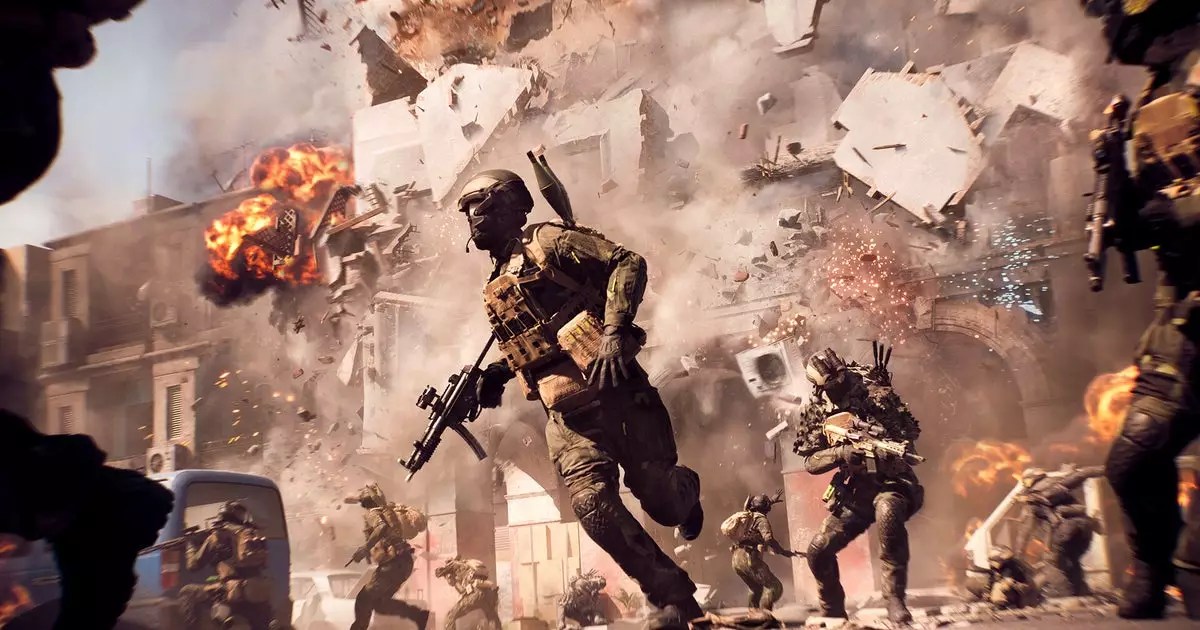As anticipation reaches a fever pitch, the gaming community has been eagerly dissecting every detail surrounding Battlefield 6. This latest installment promises to redefine modern multiplayer shooters, emphasizing both realism and high-octane action. While the reveal was intense enough to challenge our hearing, it also shed light on critical system requirements and platform specifics that could influence your decision to dive into this battlefield. The game’s hype is palpable, but beneath the surface lies a new era of hardware demands and platform policies that will determine accessibility for many players.
Hardware Expectations: Striking a Balance Between Power and Accessibility
The hardware specifications released for Battlefield 6 paint a picture of a game striving to be inclusive, yet demanding enough to push the boundaries of current technology. The minimum requirements—a mid-tier Intel Core i5-7600K or AMD Ryzen 3 1200, 16GB of RAM, and a graphics card like the Nvidia RTX 2060—are not outlandish for gamers with reasonable rigs. If you’ve built or upgraded your system within the last few years, there’s a good chance you’ll get by without significant upgrades. However, the lack of concrete performance metrics, such as frame rates or visual quality at these settings, leaves some ambiguity. It suggests that while the game may run on modest setups, the gaming experience could be a mixed bag in terms of fluidity and detail.
Conversely, the recommended specs—an Intel i7-10700 or AMD Ryzen 7 3700X, 16GB of RAM, and a graphics card like the Nvidia RTX 3060 Ti—aim for a smoother experience and higher visual fidelity. The leap from minimum to recommended hardware underscores EA’s desire to target players seeking both quality and performance. Yet, the absence of official benchmarks or FPS guarantees means players are advised to temper expectations; it’s more about “aiming for” a decent experience rather than promising excellence across the board.
Platform and Digital Rights Considerations: The Spectrum of Accessibility
One of the most contentious points is the game’s distribution and platform requirements. On Steam, players can breathe a sigh of relief—no need to launch through EA’s ecosystem every time they want to jump into battle. That’s a significant perk for those who value ease of access and streamlined gaming experiences. However, owning Battlefield 6 on Steam still necessitates an EA account, tethering your access to EA’s ecosystem to some extent. The awkward truth is that modern multiplayer games increasingly rely on digital accounts and platform-specific systems, which can encumber even the most enthusiastic players with additional hoops to jump through.
Meanwhile, the Epic Games Store version spells more complications. Players will need both the EA app and an EA account—adding layers of digital bureaucracy. For users who prefer the simplicity of Steam, these requirements are a road bump, but not an insurmountable one. For others, especially those who dislike multiple login layers—often a point of friction—the process might feel intrusive. It reflects EA’s broader strategy: leveraging platform exclusivity and mandatory app installations to tighten control over user access, a move that could alienate players tired of the increasingly restrictive digital landscape.
Is Battlefield 6 Initial Release Troublesome? Expectations versus Reality
Historically, Battlefield launches have often been marred by bugs and server issues, dampening the initial experience. Despite EA’s promises of a smooth launch, the history of the franchise suggests a need for cautious optimism. The previous patterns indicate that unless EA has made significant improvements behind the scenes, players might encounter frustrating glitches or connectivity hiccups during the early days. The recent hands-on impressions—like our reviewer James’s encounter with a single bug—offer a glimmer of hope, but one isolated incident does little to quell the broader concerns over launch stability.
Furthermore, EA’s claim that prior Battlefield experience isn’t necessary is promising—potentially opening the doors to newcomers. Nonetheless, understanding the essence of a battlefield, or the mechanics of multiplayer combat, remains a prerequisite for fully appreciating Battlefield 6’s intricacies. The depth and nuance coming from the franchise’s history suggest that newcomers might need some time to acclimate to the game’s pace and complexity, counteracting EA’s reassuring words with the practical reality of mastering a battlefield.
Final Thoughts: The Future of Battlefield is Both Bright and Challenging
Battlefield 6 stands at a crossroads—promising cutting-edge visuals and engaging multiplayer but also revealing the increasing complexity of modern gaming ecosystems. While the hardware specs seem within reach for a large segment of gamers, the platform requirements and digital ecosystem integrations introduce new friction points. EA’s approach reflects a broader industry trend: balancing technological progress with commercial control, often at the expense of consumer convenience.
The excitement surrounding Battlefield 6 is undeniable, but players should be discerning about what they expect at launch. There’s a delicate dance between new features, demanding hardware, and platform policies—each influencing the overall experience. If EA can deliver on stability and performance, this might mark a new chapter for multiplayer shooters. However, for many, the journey to truly enjoy Battlefield 6 may require patience, feasible hardware upgrades, and a willingness to navigate the digital maze that modern gaming inevitably entails.

